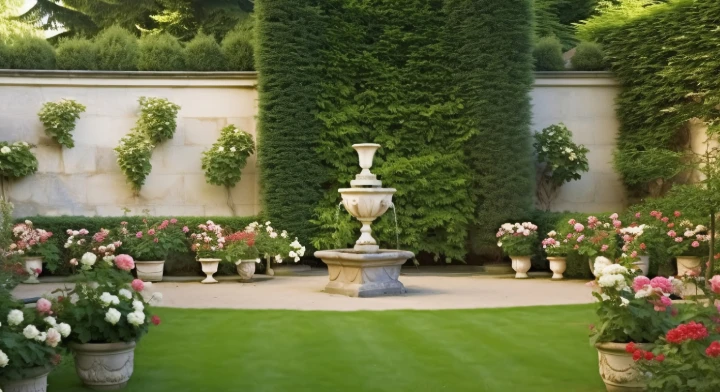
- Afrikaans
- Arabic
- Belarusian
- Bengali
- Czech
- Danish
- Dutch
- English
- Esperanto
- Estonian
- Finnish
- French
- German
- Greek
- Hindi
- Hungarian
- Icelandic
- Indonesian
- irish
- Italian
- Japanese
- kazakh
- Rwandese
- Korean
- Kyrgyz
- Lao
- Latin
- Latvian
- Malay
- Mongolian
- Myanmar
- Norwegian
- Persian
- Polish
- Portuguese
- Romanian
- Russian
- Serbian
- Spanish
- Swedish
- Tagalog
- Tajik
- Thai
- Turkish
- Turkmen
- Ukrainian
- Urdu
- Uighur
- Uzbek
- Vietnamese
Choosing the Best Turf Grass for Your Golf Course Needs and Performance
Nov . 27, 2024 00:07 Back to list
The Importance of Turf Grass in Golf Course Design and Maintenance
Golf has long been celebrated as a game of precision, skill, and serenity, often played in beautifully manicured landscapes that enhance both the challenge of the game and the overall experience of the players. One critical component of this aesthetic and functional environment is the turf grass that covers golf courses. The selection, installation, and maintenance of golf turf grass are essential for providing optimal playing conditions while also contributing to the ecological health of the course.
Understanding Golf Turf Grass Types
The choice of turf grass species is pivotal in golf course design. Different grasses offer unique advantages depending on factors such as climate, soil type, and usage patterns. Commonly used turf grasses for golf courses include Bermuda grass, Bentgrass, and Zoysia grass.
- Bermuda Grass Popular in warm climates, Bermuda grass is known for its resilience and ability to establish a strong root system. It thrives in full sun and can withstand heavy foot traffic, making it an ideal choice for fairways and tees.
- Bentgrass This grass is often chosen for putting greens because of its fine texture and ability to be mowed to very short heights. Bentgrass requires meticulous maintenance, including frequent watering and fertilization, as it is more sensitive to heat and drought compared to other grasses.
- Zoysia Grass A versatile option, Zoysia grass is favored for its drought resistance and shade tolerance. This grass grows more slowly than Bermuda but provides a dense turf that can withstand heat and heavy use.
The selection of the appropriate turf grass type is essential not only for playability but also for the long-term sustainability of the golf course.
Environmental Benefits of Turf Grass on Golf Courses
Turf grass plays a significant role in the golf course ecosystem. It helps in soil stabilization, preventing erosion, and promoting water retention. Well-maintained grass areas can filter pollutants from rainwater runoff, improving local water quality. Turf grass also aids in carbon sequestration, which is crucial in combating climate change.
golf turf grass

Furthermore, golf courses that prioritize native and drought-resistant grasses can significantly reduce water usage and maintain biodiversity. Integrating native plant species into golf course landscapes not only enhances aesthetics but also supports local wildlife and ecosystems.
Maintenance Practices for Optimal Golf Turf Grass
To keep golf course turf grass healthy and playable, consistent maintenance practices are essential. These include mowing, aeration, fertilization, pest management, and irrigation.
- Mowing Regular mowing is crucial to achieving the desired height and density of the grass. Each grass type has specific height requirements, and consistent mowing helps promote healthy growth.
- Aeration Aerating the turf helps alleviate soil compaction, allowing water, nutrients, and air to penetrate the soil more effectively. This practice is particularly important for high-traffic areas such as fairways and greens.
- Fertilization Nutrient management is key for promoting lush growth and color in turf grass. Soil testing can determine nutrient deficiencies, guiding targeted fertilization efforts.
- Pest Management Integrated Pest Management (IPM) strategies can minimize the impact of pests and diseases on turf grass without relying solely on chemical treatments. This approach helps protect the environment while maintaining the health of the grass.
- Irrigation Efficient irrigation systems are crucial, especially in areas prone to drought. Implementing smart irrigation practices, such as using rain sensors and scheduling watering during cooler parts of the day, can conserve water and maintain healthy turf.
Conclusion
In conclusion, golf turf grass is much more than just a surface to play on; it is a vital element of golf course design and sustainability. The right choice of grass species, combined with effective maintenance and environmentally conscious practices, contributes to a superior playing experience while promoting ecological health. As the golf industry continues to evolve, embracing innovative turf management strategies will ensure that courses remain enjoyable and sustainable for future generations, allowing players to appreciate the beauty and challenge of the game in natural, thriving landscapes.
-
The Benefits of Artificial Turf for Indoors
NewsJul.15,2025
-
How Artificial Grass Suppliers Ensure Quality Products
NewsJul.15,2025
-
Artificial Grass and Pets: A Space for Relaxation
NewsJul.08,2025
-
Balcony & Outdoor Decoration with Artificial Grass
NewsJul.08,2025
-
Best Indoor Artificial Grass for Home
NewsJul.07,2025
-
Best Pet Turf for Dogs: Safe & Durable Artificial Grass Options
NewsJul.07,2025
Products categories









